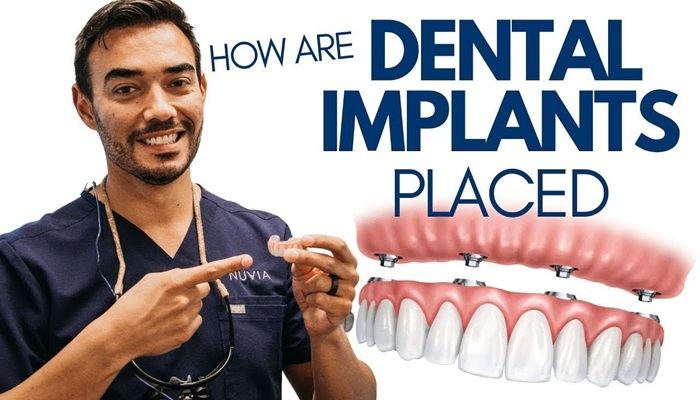Dental implants have become a popular solution for replacing missing teeth. They offer a long-lasting and natural-looking alternative to dentures and bridges. Understanding the stages involved in getting dental implants can help patients prepare for the process and set realistic expectations. This article will detail each stage of the dental implant procedure, from initial consultation to final restoration.
What Are Dental Implants?
Dental implants are artificial tooth roots made of biocompatible materials, usually titanium. They are surgically placed into the jawbone to support crowns, bridges, or dentures. Implants provide a strong foundation for replacement teeth, allowing patients to eat, speak, and smile confidently.
What Are The Stages of A Dental Implant?
Stage 1: Initial Consultation and Planning
The first step in the dental implant journey is the initial consultation. During this appointment, the dentist will evaluate your oral health to determine if you are a suitable candidate for implants. This assessment may include:
Medical History Review: The dentist will ask about your overall health and any medications you take.
Dental Examination: A thorough examination of your teeth and gums will be conducted.
Imaging Tests: X-rays or 3D scans may be taken to assess the condition of your jawbone and determine the best placement for the implants.
SEE ALSO: How Is A Dental Implant Placed: A Step-by-Step Guide
If you have any existing dental issues, such as gum disease or insufficient bone density, additional treatments may be necessary before proceeding with implants. For instance, you might need a bone graft to strengthen your jawbone.
Stage 2: Surgical Placement of the Implant
Once you are cleared for surgery, the next step is placing the dental implant. This procedure typically involves local anesthesia to minimize discomfort. Here’s what happens during this stage:
Incision: The dentist makes an incision in your gum tissue to expose the jawbone.
Drilling: Small holes are drilled into the jawbone where the implant will be placed.
Implant Insertion: The titanium implant is carefully inserted into the drilled hole.
Closure: The gum tissue is stitched back over the implant.
After surgery, a healing period is required. This phase is crucial as it allows for osseointegration, where the bone fuses with the titanium implant, creating a stable foundation. This healing process can take anywhere from three to six months.
Stage 3: Osseointegration
Osseointegration is a vital stage that ensures the success of your dental implant. During this time:
The bone grows around the implant, securing it in place.
You may experience some swelling or discomfort, which can usually be managed with over-the-counter pain relief.
Regular follow-up appointments may be scheduled during this phase to monitor healing progress and ensure everything is on track.
Stage 4: Placement of the Abutment
Once osseointegration is complete and the implant is securely integrated into your jawbone, the next step involves placing an abutment:
Reopening the Gum: The dentist makes a small incision in your gum tissue to expose the top of the implant.
Attaching the Abutment: The abutment—a small connector post—is attached to the implant.
Closing Up: The gum tissue is then stitched back around the abutment.
This stage also requires a healing period as your gums need time to recover around the abutment. During this time, a temporary crown may be placed if necessary.
Stage 5: Preparing Your Dental Crown
After your gums have healed around the abutment, it’s time to prepare for your final restoration—the dental crown:
Impressions: Your dentist will take impressions of your mouth to create a custom crown that matches your natural teeth.
Material Selection: You will discuss options for materials used in making your crown (e.g., porcelain or ceramic) based on aesthetics and durability.
Fabrication: The impressions are sent to a dental lab where your crown is crafted.
This process can take several weeks as precision is essential for a natural look and fit.
Stage 6: Fitting Your Dental Crown
The final stage involves fitting your custom-made crown:
Placement: Once ready, you will return to your dentist’s office for placement.
Adjustments: The dentist will check how well the crown fits and make any necessary adjustments for comfort and appearance.
Final Attachment: Once satisfied with the fit, the crown is securely attached to the abutment.
With this last step completed, you can enjoy your new smile! Dental implants function like natural teeth, allowing you to eat and speak without worry.
Post-Procedure Care
After completing all stages of dental implants, proper care is essential for long-term success:
Oral Hygiene: Maintain good oral hygiene by brushing twice daily and flossing regularly.
Regular Check-Ups: Schedule regular dental check-ups to monitor your implants and overall oral health.
Avoid Hard Foods Initially: For a few days after receiving your crown, avoid hard or sticky foods that could dislodge it.
Conclusion
The stages of dental implants involve careful planning and execution but offer significant benefits in restoring function and aesthetics after tooth loss. From initial consultation through final restoration, each step plays a crucial role in ensuring successful outcomes. If you are considering dental implants, consult with an experienced dental professional who can guide you through each stage of this transformative process.
Related topics:

